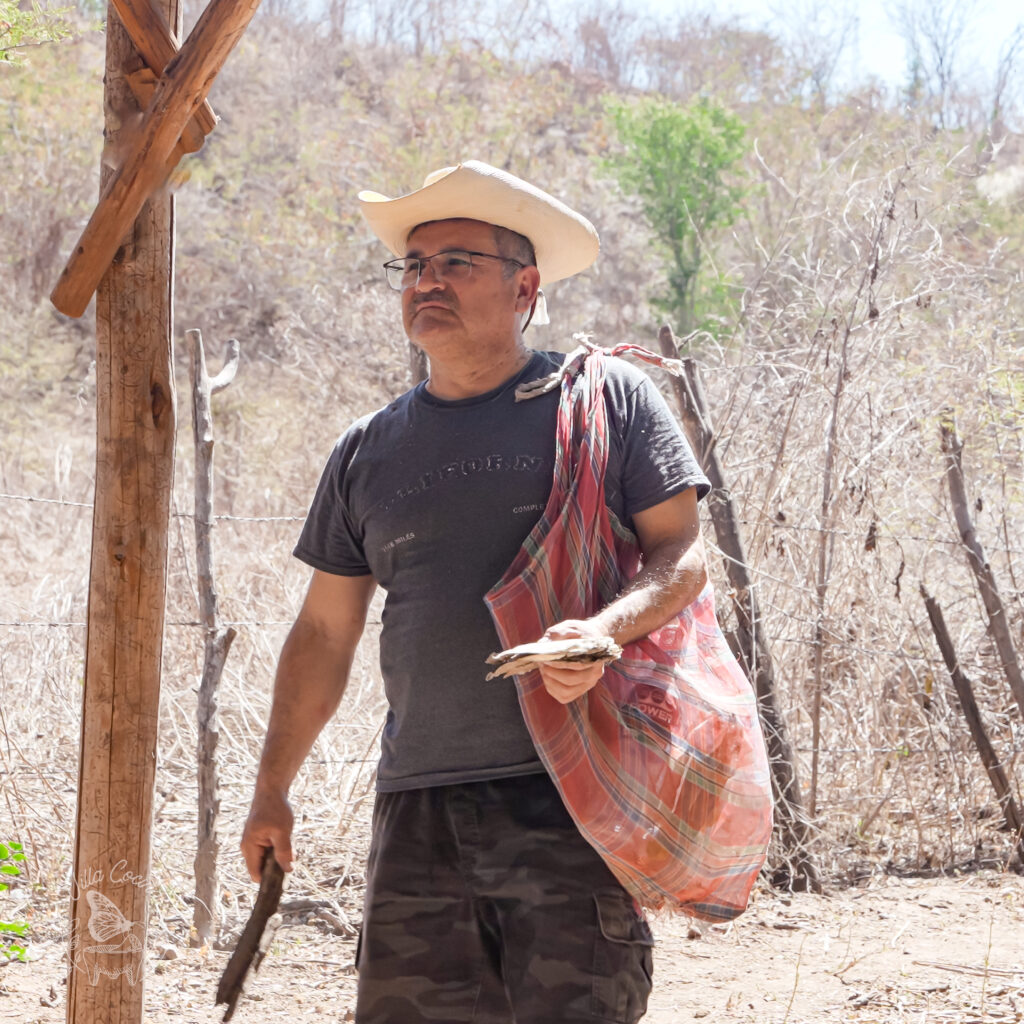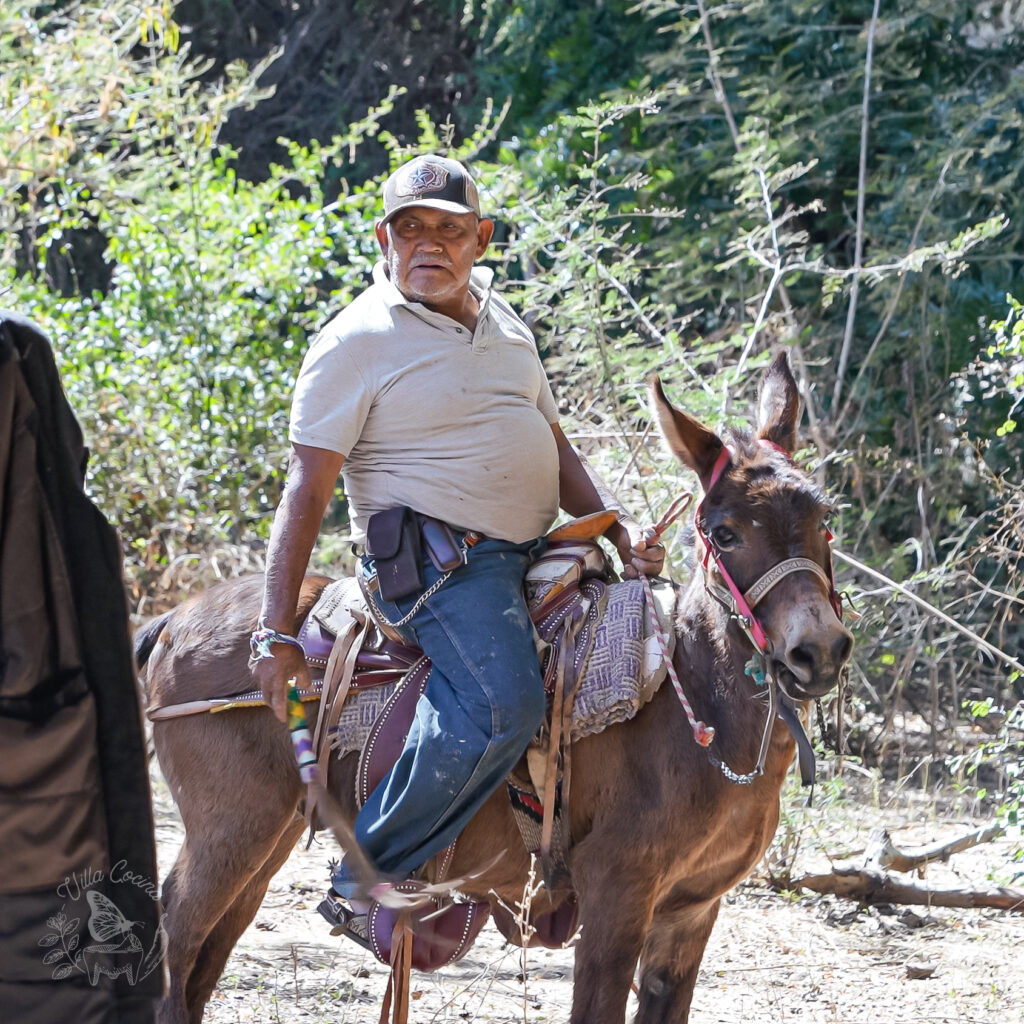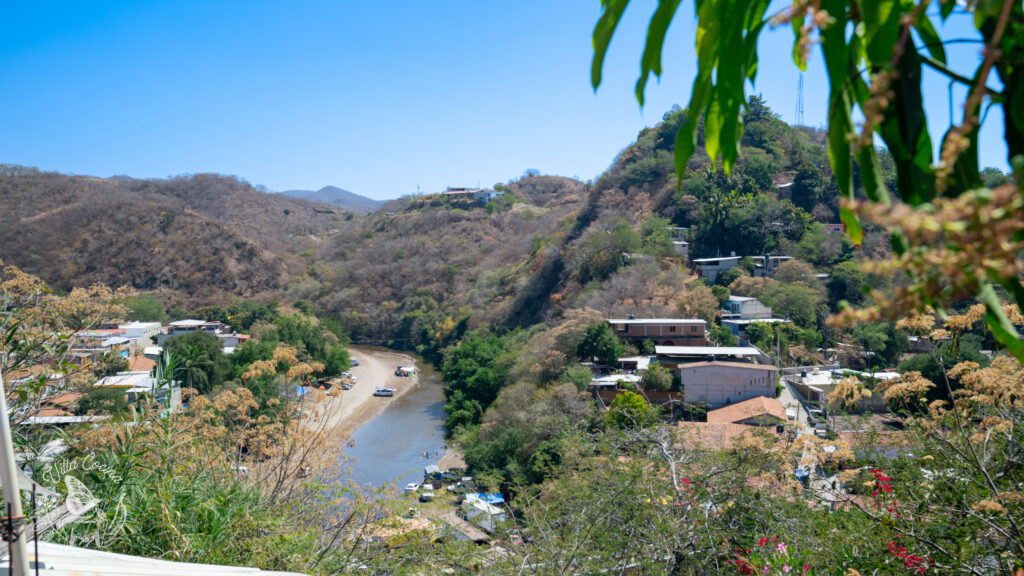Roasted Tomatillo Salsa
Roasted tomatillo salsa is one of those simple pleasures that instantly elevates a meal. Smoky, tangy, and deeply flavorful, it captures the heart of Mexican cooking.
What is a salsa
This roasted tomatillo salsa is a shining example of the incredible culinary richness that Mexican cuisine has to offer. Salsas are the fundamental sauces that bring Mexican dishes to life, and most are crafted with a combination of tomatoes, peppers, garlic, onions, herbs, and spices.
“Whether you are a fan of mild and tangy or bold and spicy, there is a salsa out there to transport you to the vibrant world of Mexican cuisine.“
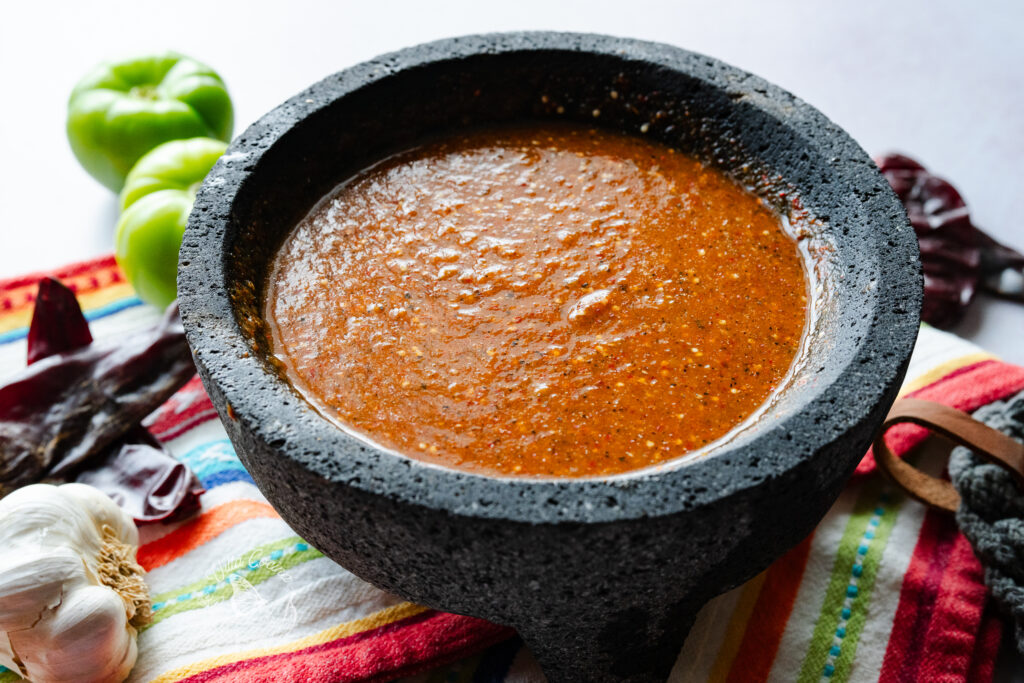
The beauty of salsa lies on their versatility, as the ingredients can be combined in countless ways to create diverse styles and flavors. The use of various peppers, each with its unique flavor and heat profile, add an extra layer of complexity and regional traits to these sauces.
Make the best salsa
In Mexican cooking, sauces are not just a condiment, but an essential component that elevates a dish to new heights. With a variety of sauces to choose from, each one is carefully crafted to complement a specific dish. But thats not all – some sauces are also made to be dips, condiments, and even add a pop of color to soups and stews.
Before we even think about making a dish taste like home, salsas are also made to captivate the eye. They must look appealing, and thats where the magic happens. With two methods to make salsas, the choice is yours:
- Molcajete Method: This ancient tool has been used since pre-hispanic times to make salsas and sauces. Mashing the ingredients in a molcajete releases natural oils, resulting in richer flavors and a rustic, chunky consistency that many prefer. Check out this stunning Molcajete from Masienda.
- Blender method: When a smooth consistency is required, blending gets the job done. This method breaks down the ingredients to a smooth and uniform consistency, perfect for the times you need a salsa taquera, mole sauce or enchilada sauce.
Either way, the result is a delicious salsa thats worth celebrating, even when eaten with just a plain tortilla. So, which method will you choose? The traditional molcajete or the modern blender? Let me know in the comment section! Depending on what you are making, the choice is yours. But one thing is for certain – the flavors will be worth raving about!
What are Tomatillos
Tomatillos, often mislabeled as “green tomatoes,” are a unique green fruit that’s actually related to tomatoes. These small spherical fruits are encased in a papery, green husk that must be peeled away before use. A sticky substance coats the surface of the fruit, making rinsing essential to remove it – but don’t worry, it washes away easily.
Tomatillos boast delicate sweet, tart, and fruity flavors that deepen and intensify when cooked, making them the ideal ingredient for Authentic Mexican Salsas. Their versatility and flavor profile have earned them a special place in many traditional recipes.
Substituions
If fresh or canned tomatillos are unavailable, do not substitute them with green tomatoes. Here’s why:
- Flavor: tomatillos have a unique sweet and tart flavor profile that perfectly balances the ingredients in salsas. Green tomatoes, on the other hand, have a bitter and grassy taste that would disrupt this balance.
- Texture: tomatillos are softer and cook until tender and juicy, while green tomatoes are firmer and would alter the consistency of the salsa.
- Tradition: tomatillos are a native and integral food crop in Mexico and Central America, used daily in traditional cooking. Substituting them with green tomatoes would compromise the authenticity and flavor of Mexican dishes.
In summary, while tomatillos and green tomatoes share some similarities, their differences in flavors, texture, and cultural significance makes them unsuitable substitutes for each other.
Where can I find tomatillos
In Mexico tomatillos can be found even along river banks, as showcased in my video, ‘The Authentic and Iconic Mexican Cookout.’ I lived most of my childhood in a small town located in Michoacán, Mexico. Returning to my family’s ranch, just 15 minutes outside of town, fills me with joy and nostalgia as I cook with loved ones. Women cooking, men searching for wood to fuel the chimney – a timeless tradition that warms my heart.
Fast forward to my life in USA, where I’ve lived for 23 years. Mexican ingredients are now more popular than ever! I live in GA, and well-known American markets now carry tomatillos. You can also find them at Mexican food markets and farmer’s markets. Typically, they’re located in the produce section of the store.
How to Clean Tomatillos
Cleaning and storing the tomatillos is a straightforward process. Here’s a step-by-step guide:
- Remove the paper-like husk from the tomatillos.
- Rinse the tomatillos to remove the sticky substance from their surface.
- Pat dry the tomatillos with a paper towel or clean cloth to remove excess moisture.
Now, you can use the tomatillos in your recipe or store them for later use. Here are some storage tips:
- Vacuum seal bag: store them in a vacuum seal bag, removing as much air as possible without crushing the tomatillos. This method keeps them fresh for a longer period of time. Zwilling vacuum starter set : My kitchen MVP for this task! Keeps ingredients fresh and organized, without taking up valuable kitchen space.
- Zip lock bag: Alternatively, store the tomatillos in a zip lock bag, removing as much air as possible and closing the bag. This method keeps them fresh for 1-2 weeks.
- Refrigerate: once cleaned and stored, keep tomatillos in the refrigerator to keep them fresh.
How to Cook Tomatillos
Roasting: roasting is like a warm hug to your taste buds. It deepens the flavors, adds a hint of smoky char, and enhances the aromas. The result? A rich, complex salsa that’s perfect for dipping, topping, or enjoying straight from the molcajete.
Boiling: a quick and easy method to cook the ingredients for a salsa. It makes the tomatillos soft and easy to blend, especially when using a molcajete (Mexican mortar and pestle). But beware! Some of the flavors in the ingredients will transfer into the water, causing a slight loss of flavors in the end result.
When it comes to making the perfect Mexican salsa, roasting is best way to cook your ingredients. This ancient technique unlocks depth of flavor thats simply hard to beat, making it the go-to method for salsa aficionados. My favorite Made in comal by Masienda is perfect for roasting salsa ingredients.
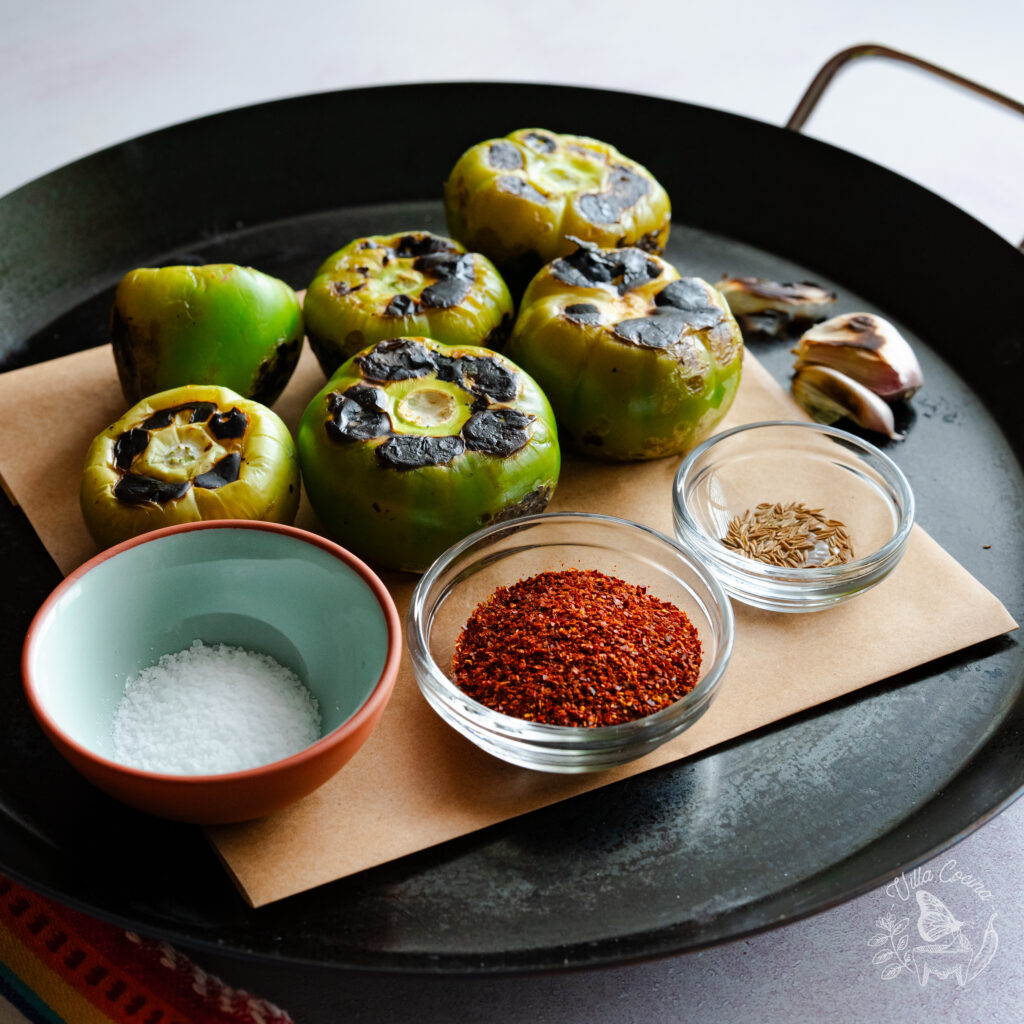
We also use leftover wood charcoal to cook the ingredients directly over the source if heat. This adds a ton of flavor but also cooks them quickly. The best of both worlds!
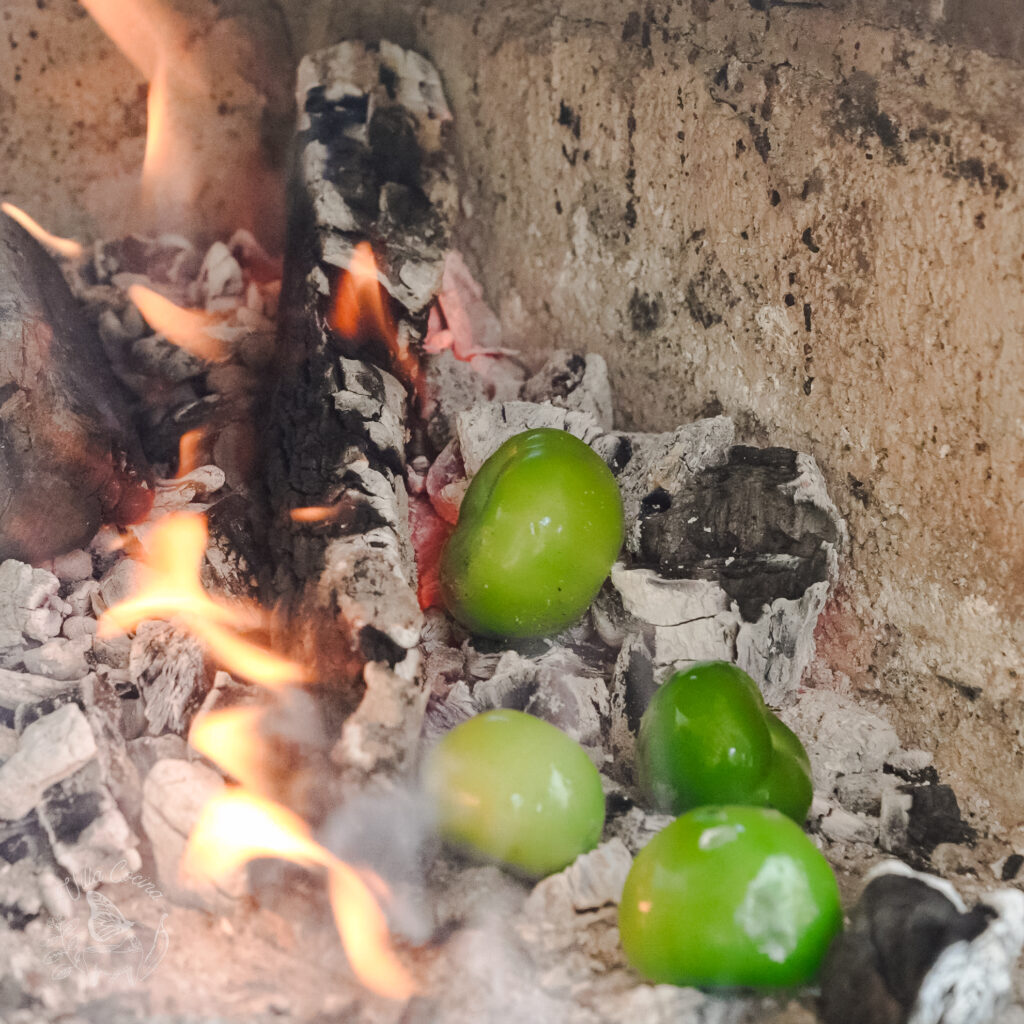
Recipe video tutorial
Below is my easy to follow video tutorial on how to make this Enchiladas Rojas.
Enjoyed the video? Subscribe and tap the bell for updates on new recipes. Thank you for your support!
Watch our Mexican Food Series:
- The carnitas capital of the world: FREE all you can eat tacos
- The authentic and iconic Mexican cookout (cooking at our family’s Mexican ranch)
- Celebrating Mexico’s street food culture: The best of Michoacan
- Mexico’s street food: enchiladas Rojas (cooking at our family’s Mexican ranch)
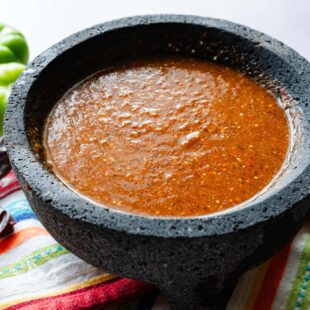
Roasted tomatillo salsa
Ingredients
- 1 lb whole tomatillos, cleaned
- 2 garlic cloves, unpeeled
- 1.5 tbsp ground guajillo
- 2 tbsp water
- 1/8 tsp whole cumin
- To taste kosher salt
Instructions
Roast
- Place a comal or cast iron pan over medium heat. Roast the tomatillos until cooked through, charred, and blackened on all side. Roast the garlic until cooked through with a few brown spots on the peel. Remove from heat when ready.
Molcajete method
- With the pestle, mash peeled garlic, cumin and 1/2 tsp of kosher salt into a paste. Mix in guajillo and water until combined. Then, add one tomatillo at a time, mashing until smooth and well combined. Adjust salt to taste.
Blender method
- Blend all ingredients until smooth, then stir in salt to taste.
Did you make this recipe?
Show some love! Tag @villacocinaofficial on Instagram and drop a 5-star review. Your support means everything—thanks!
